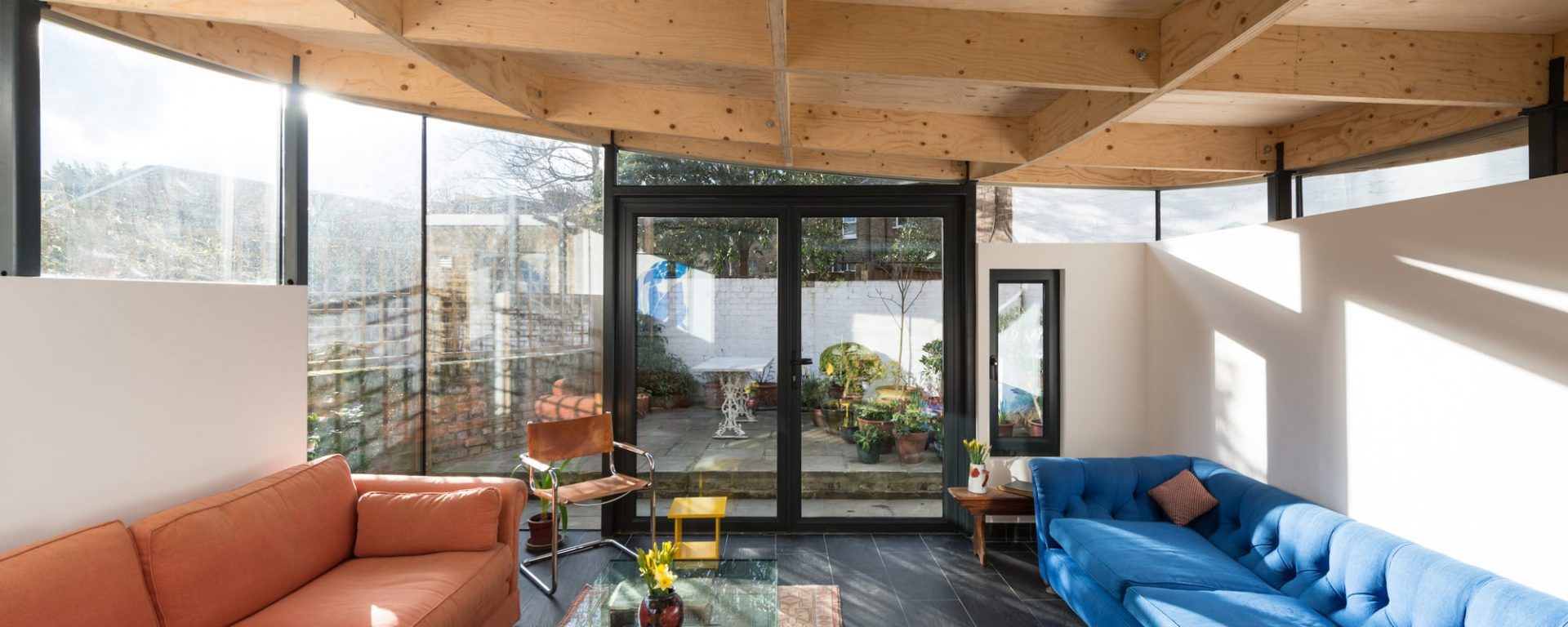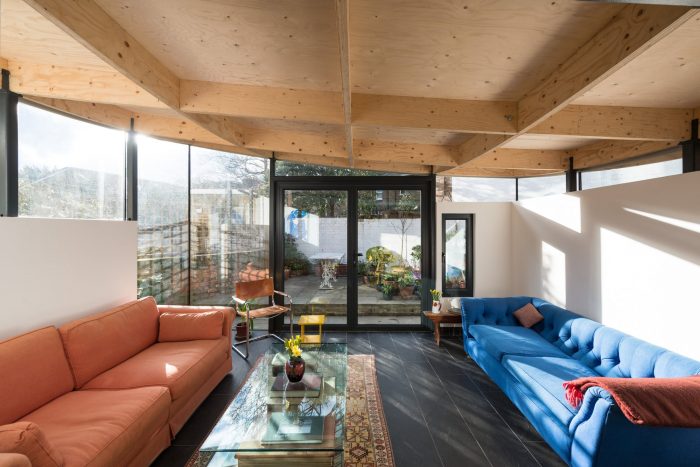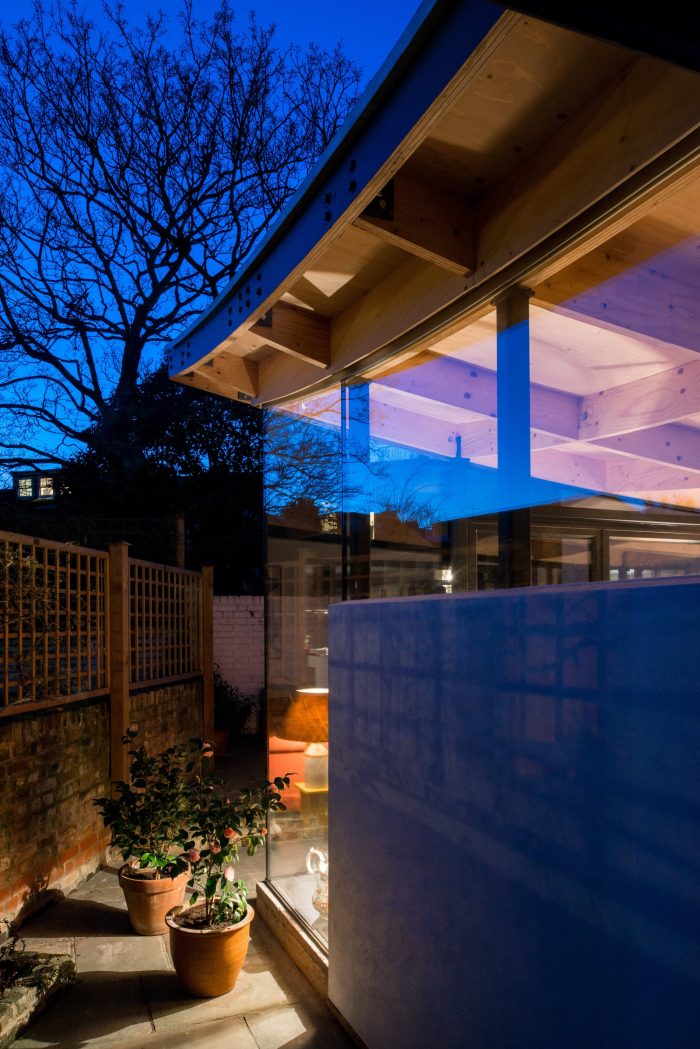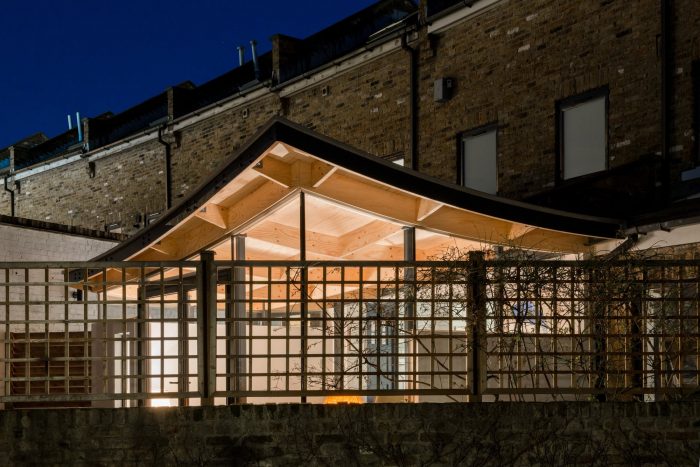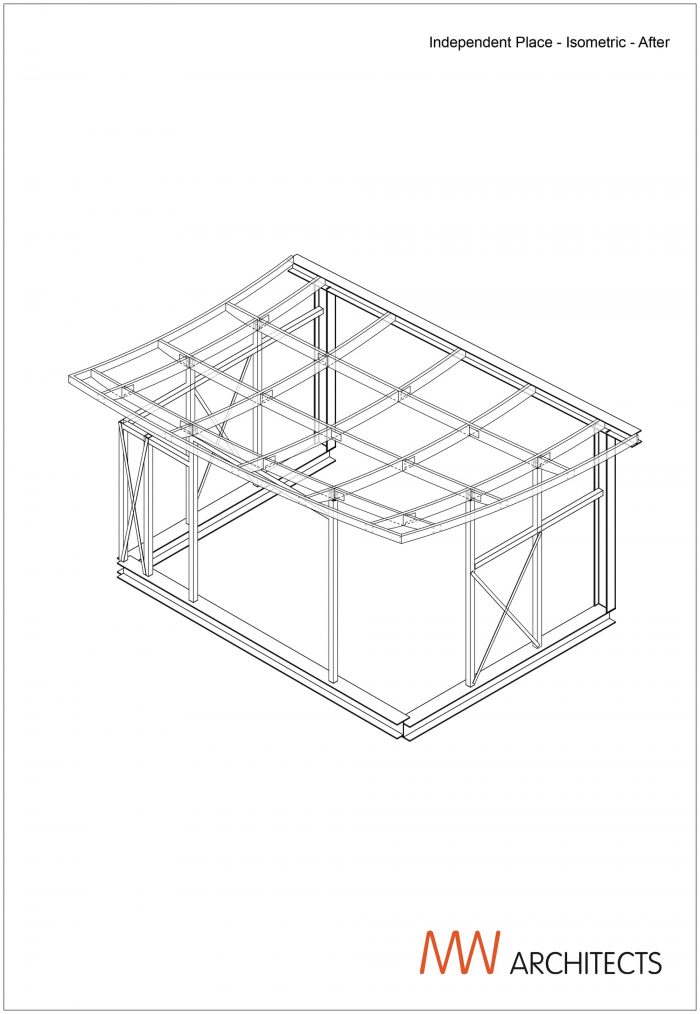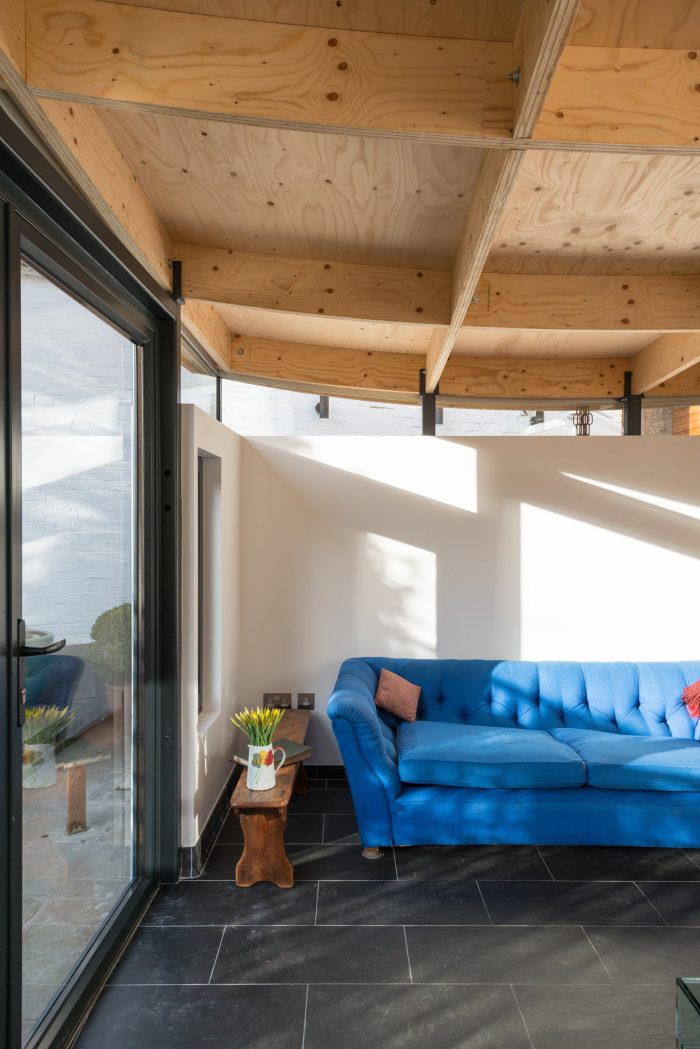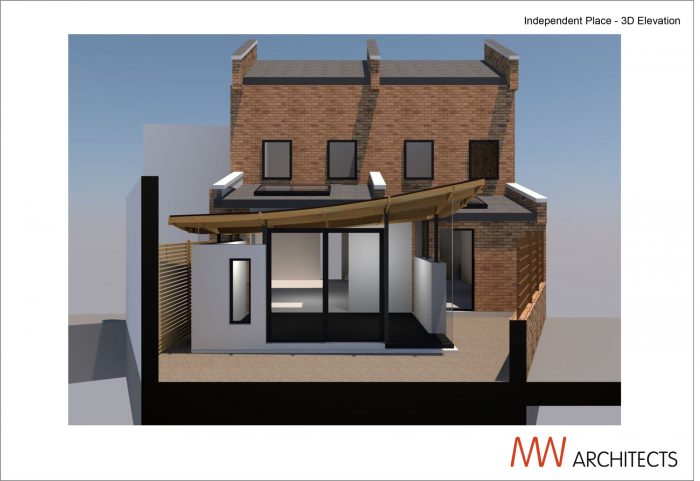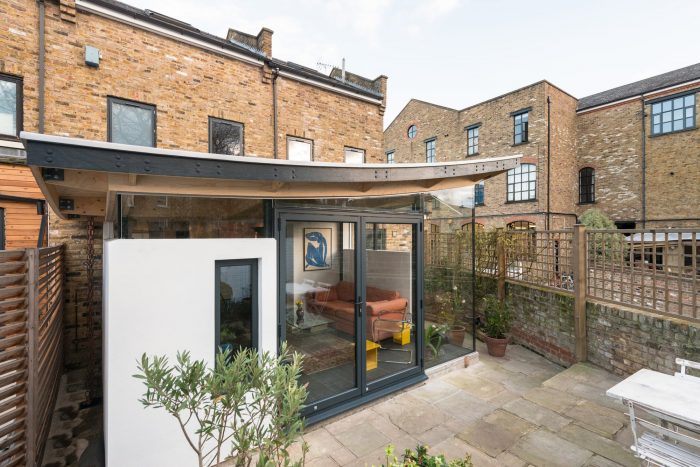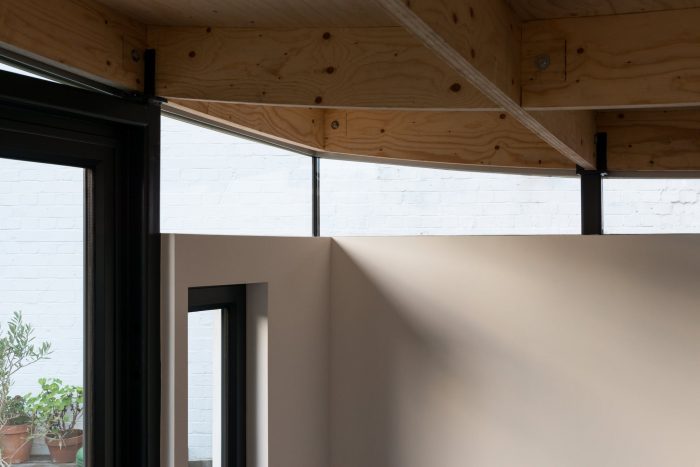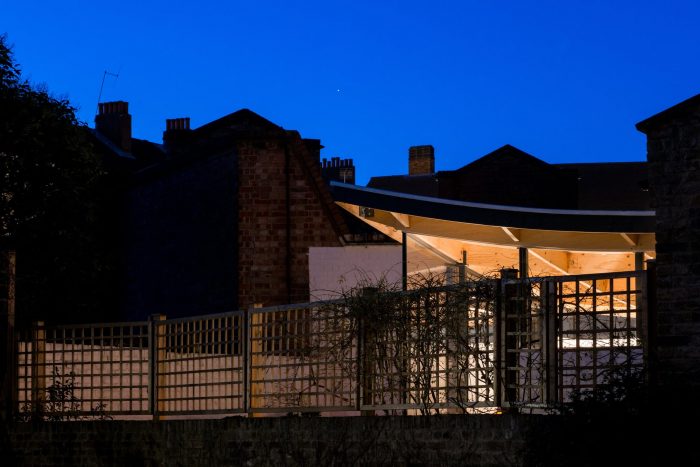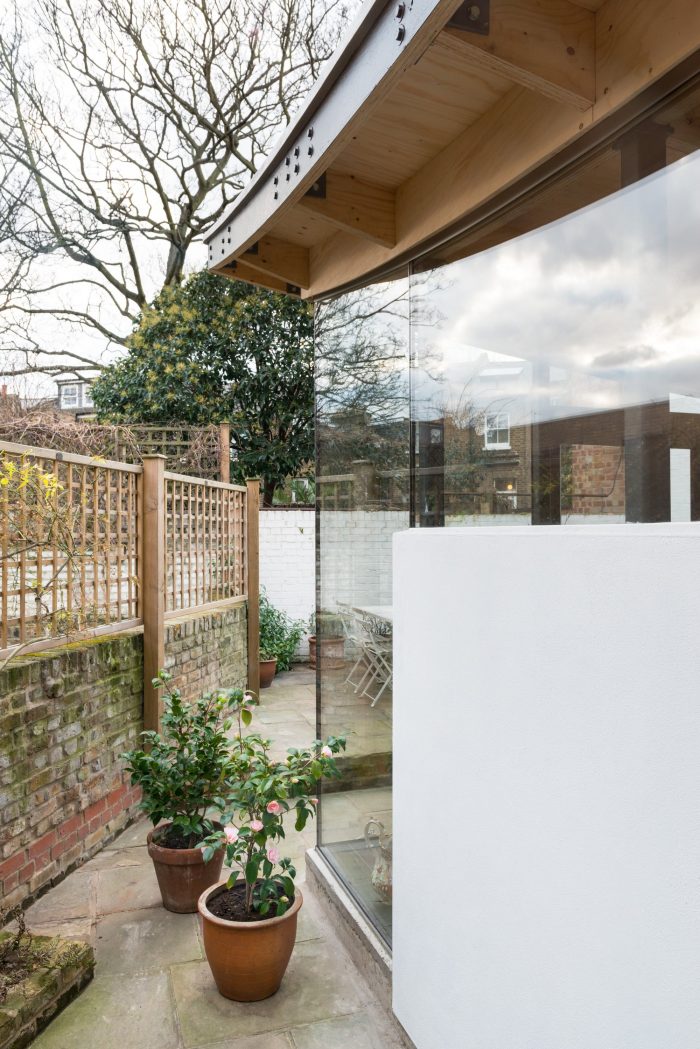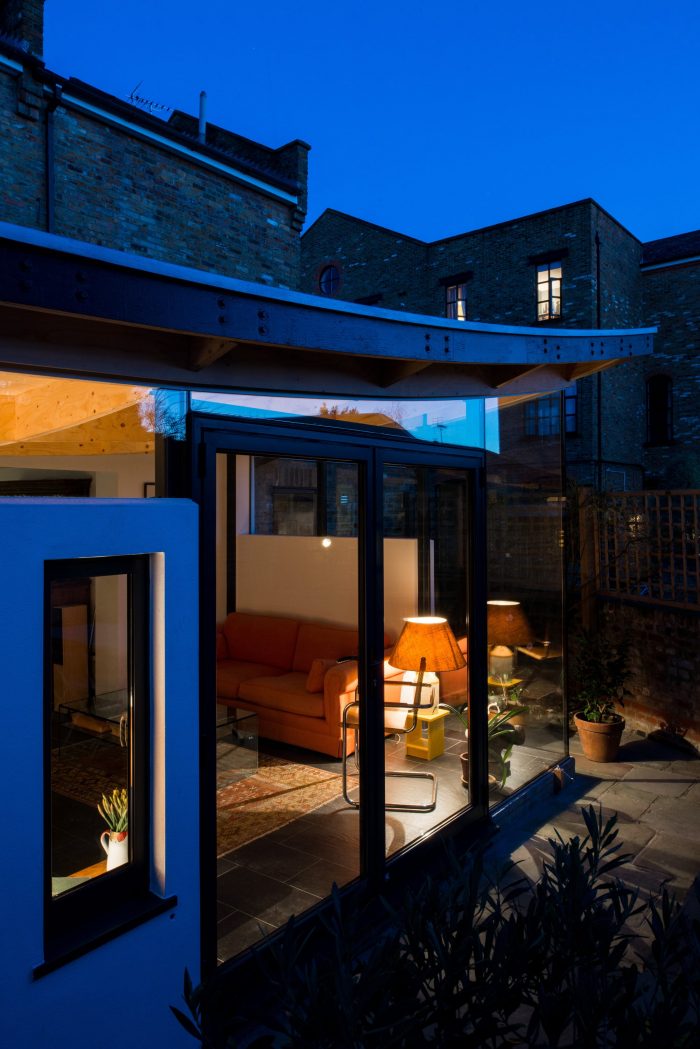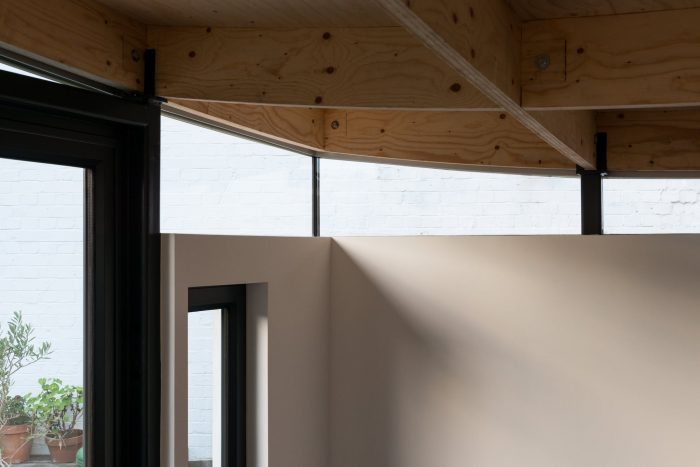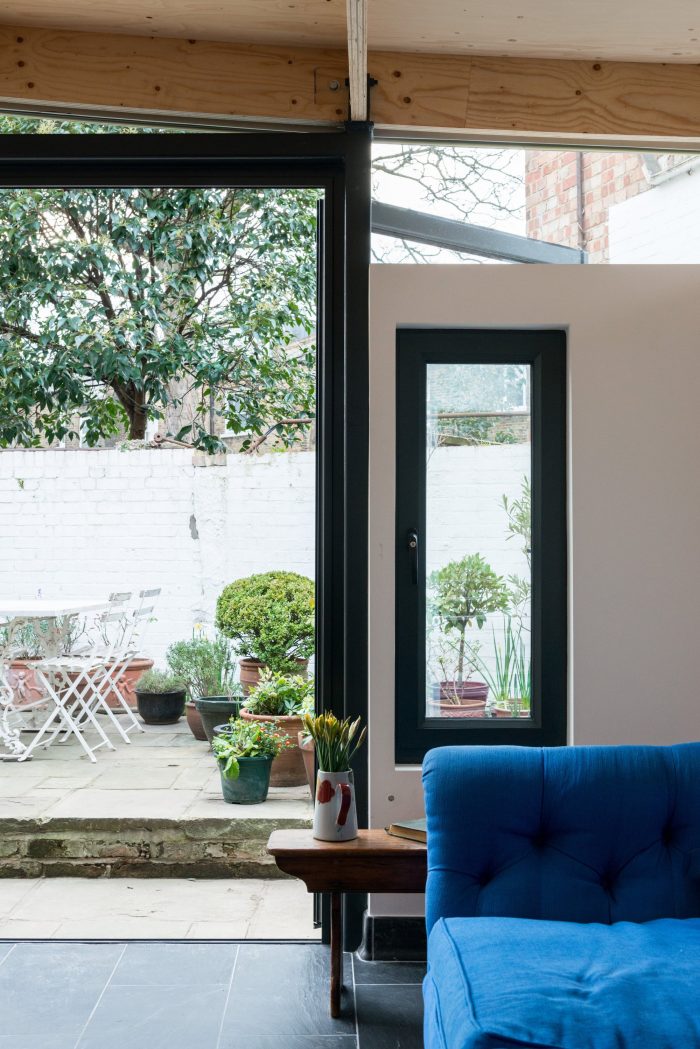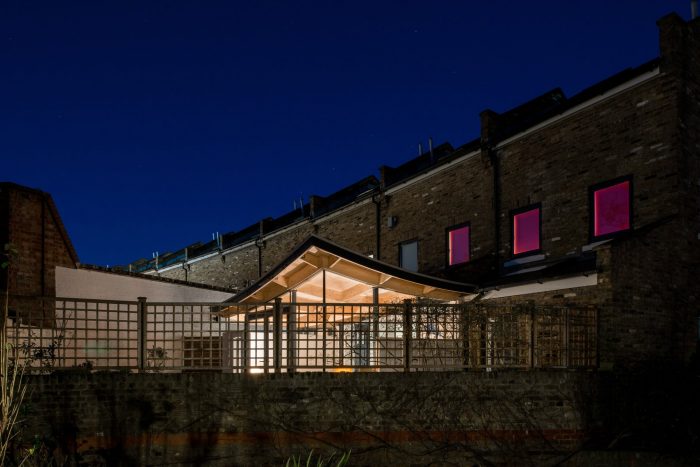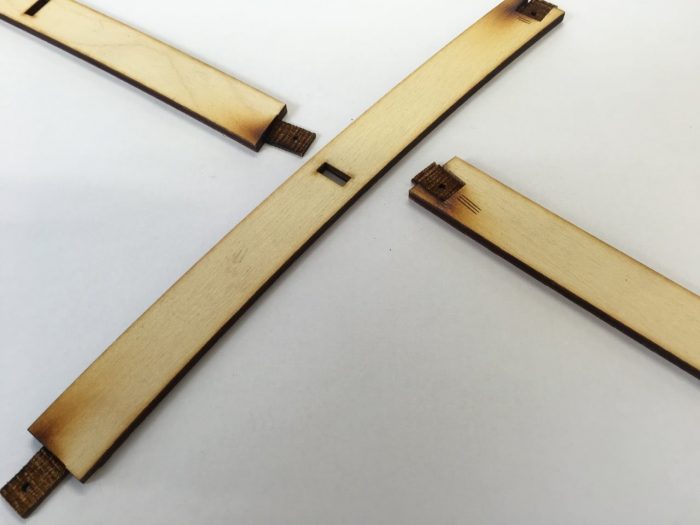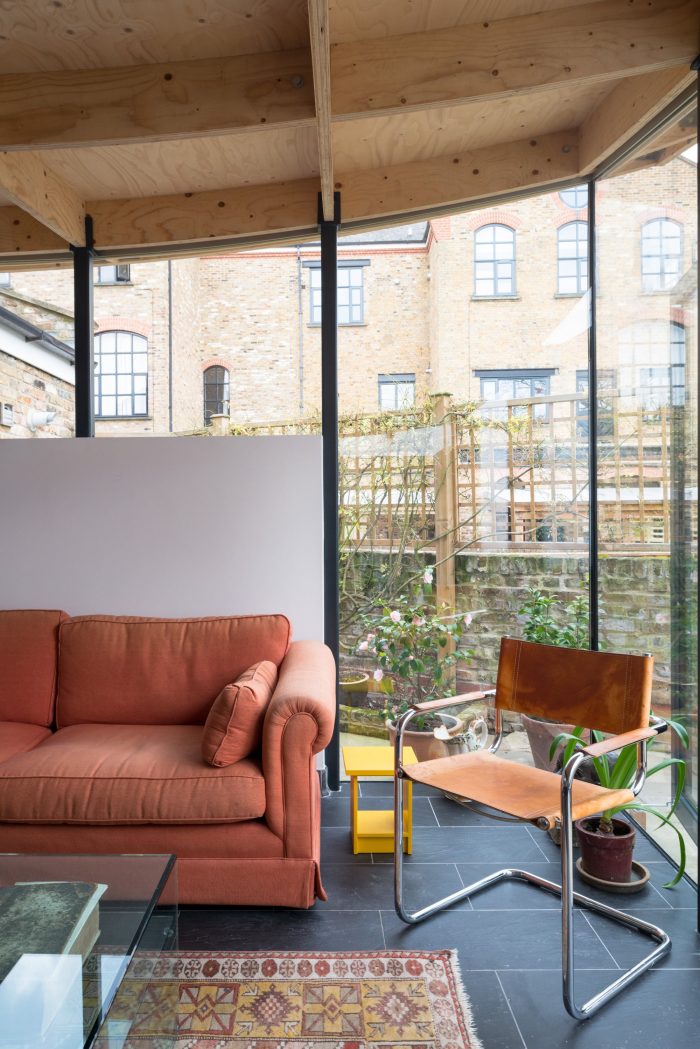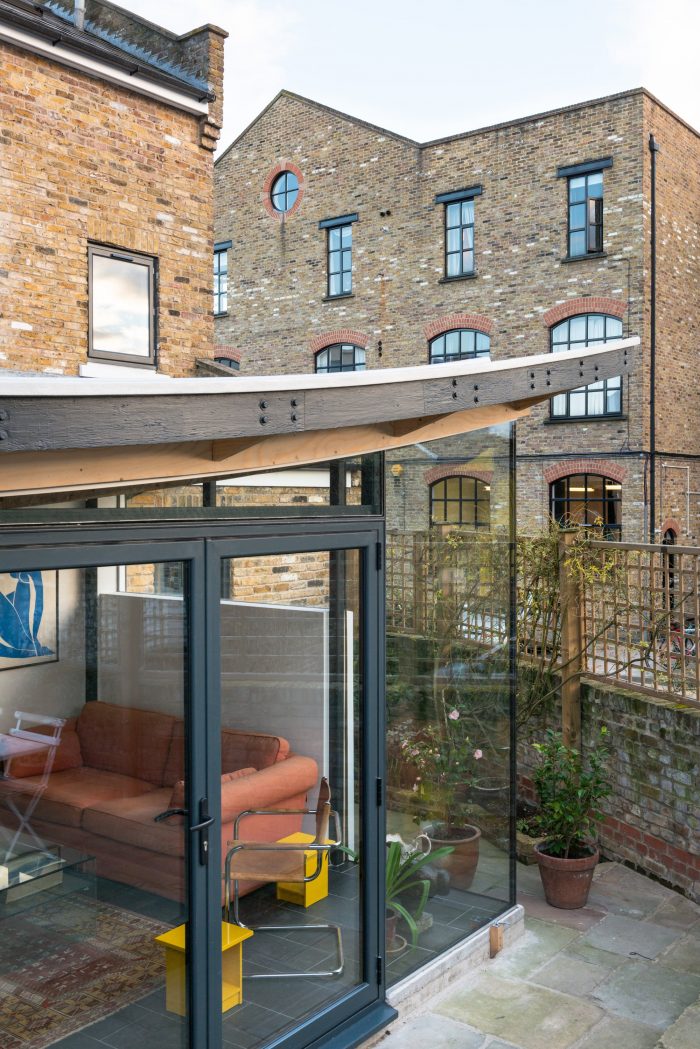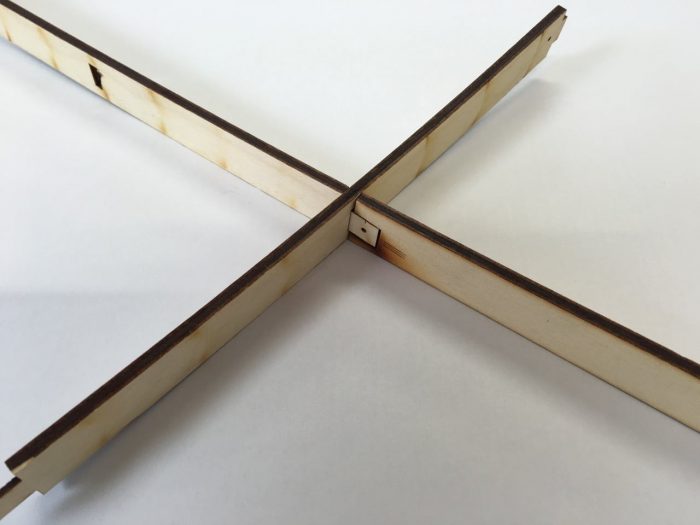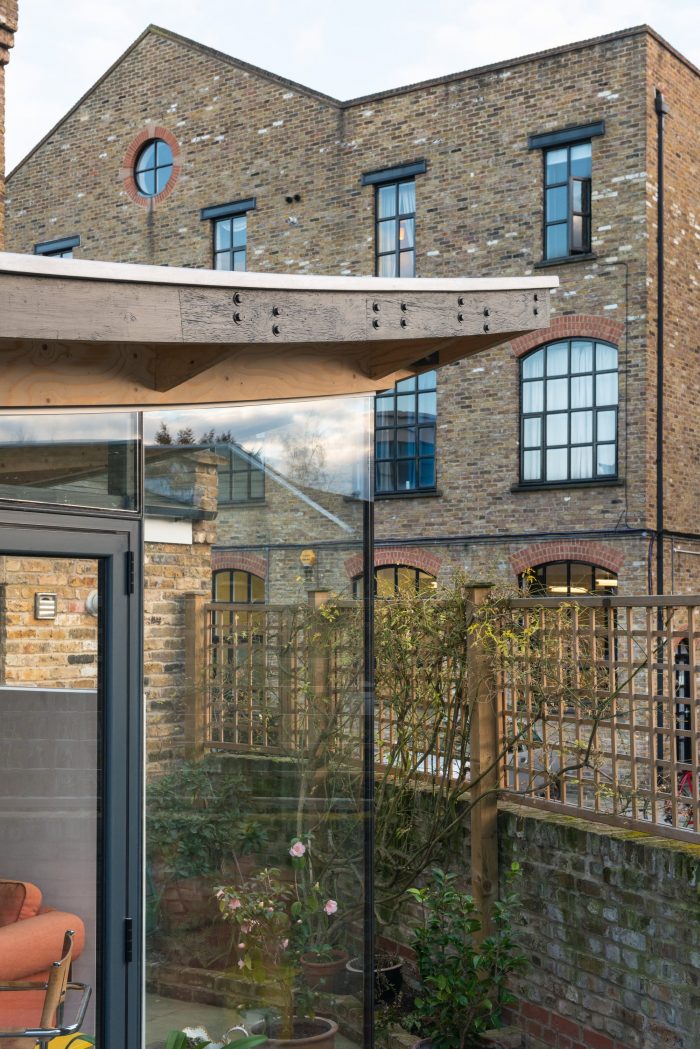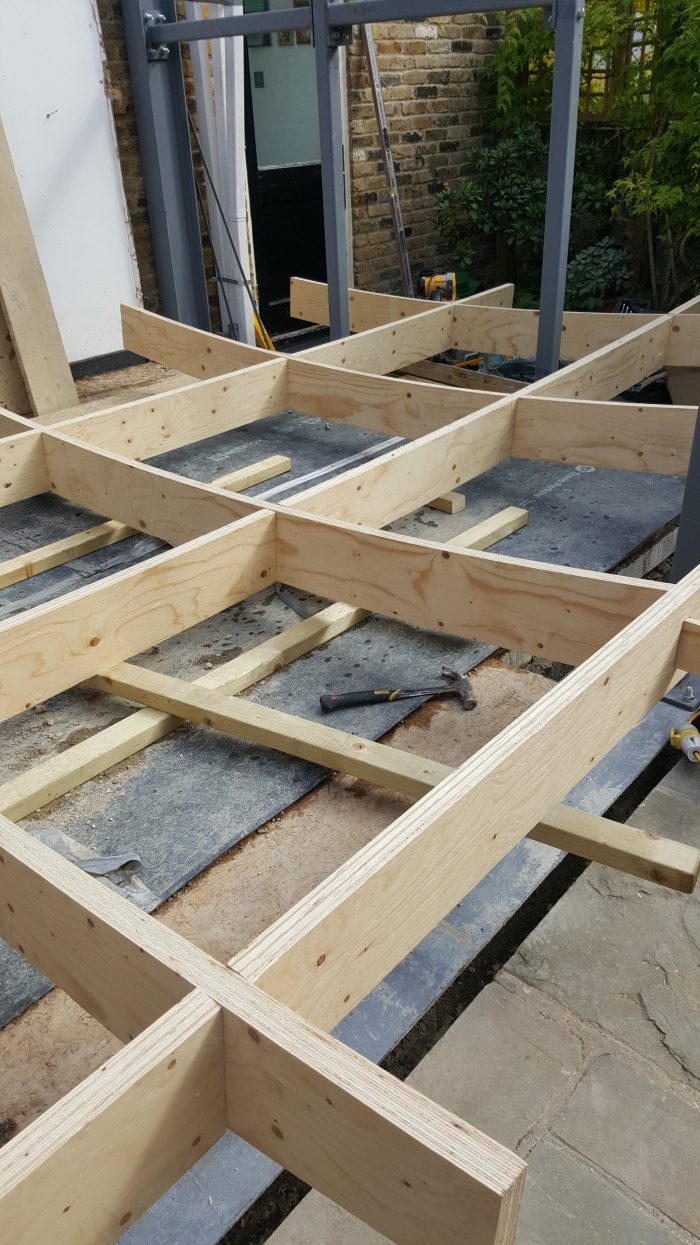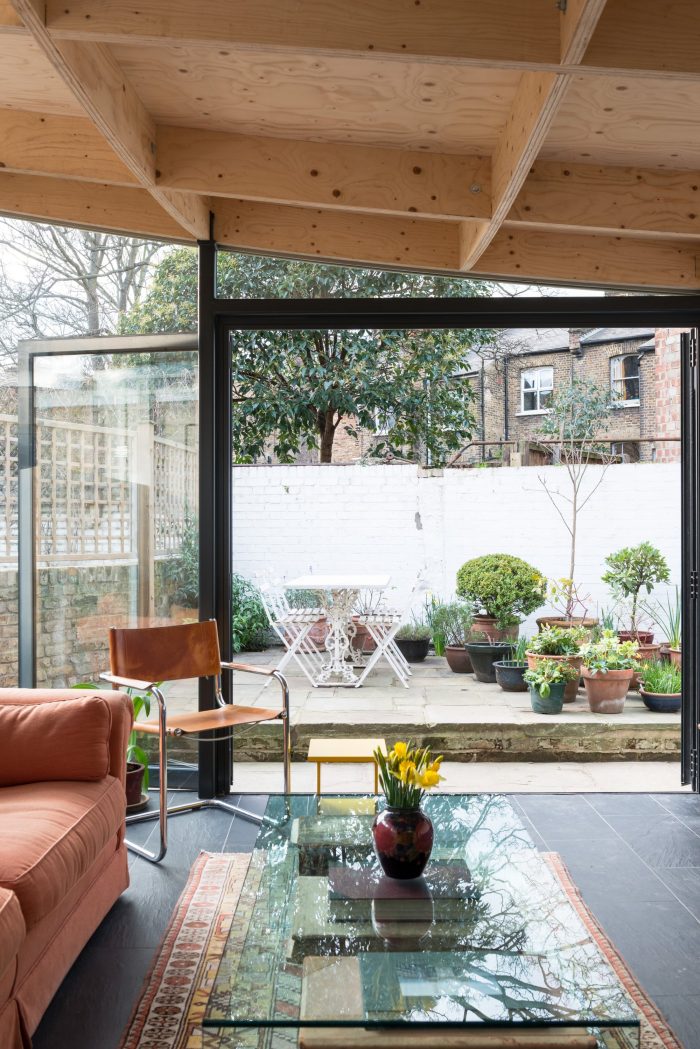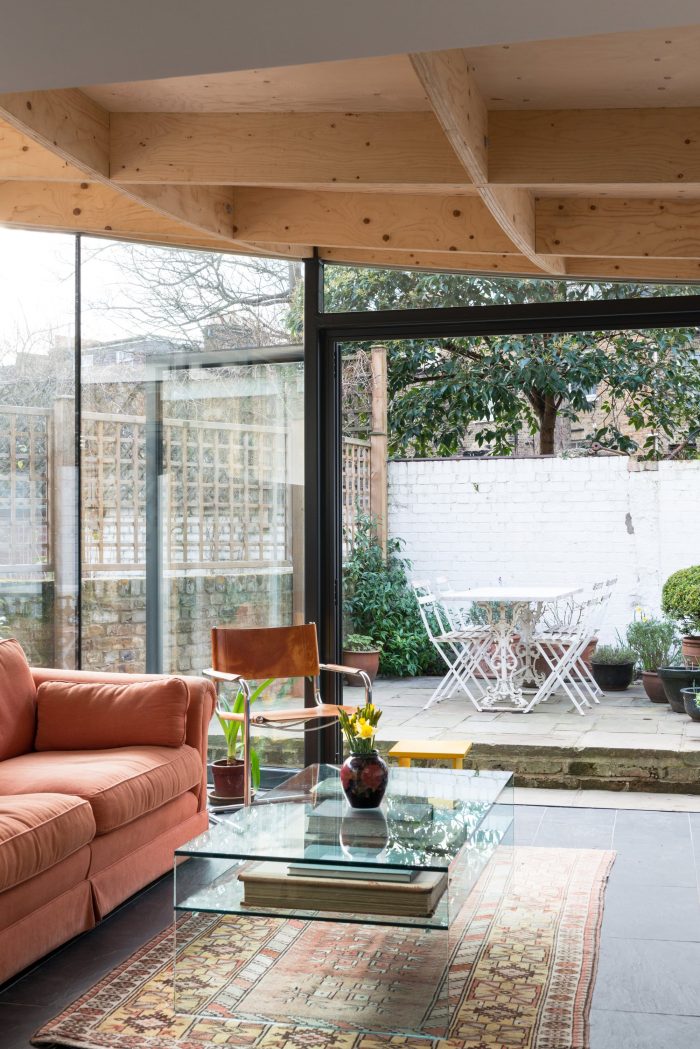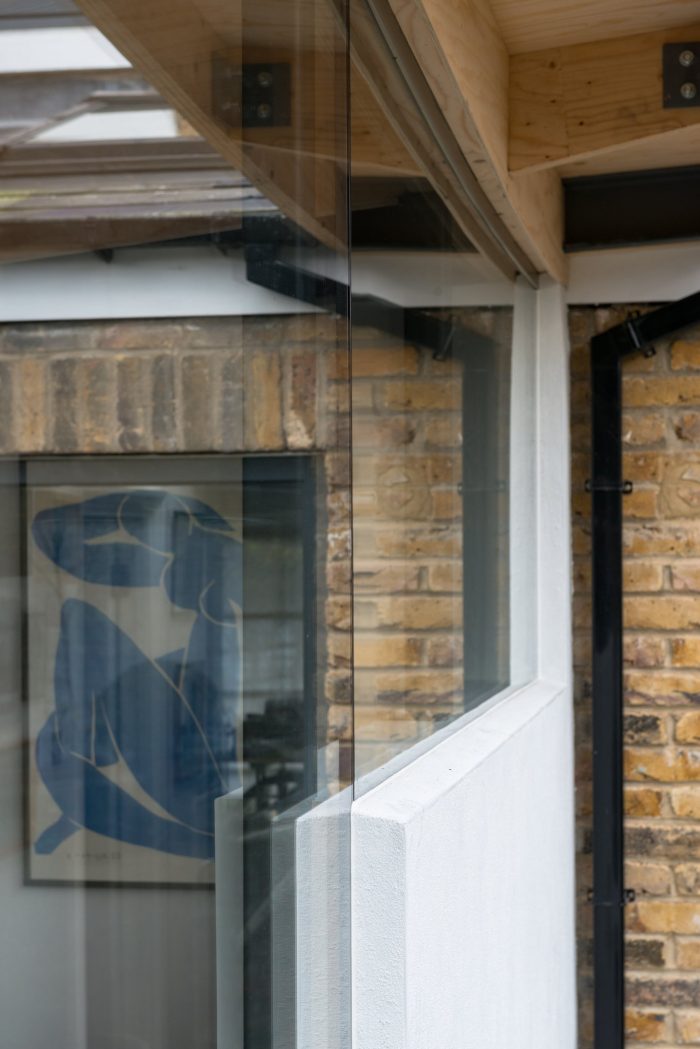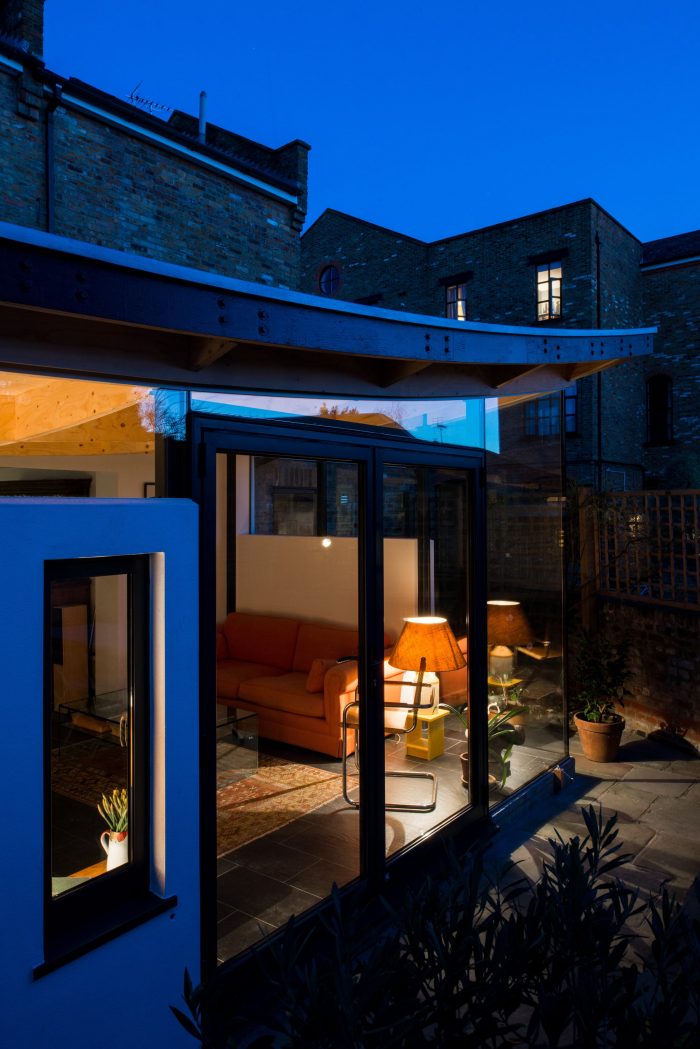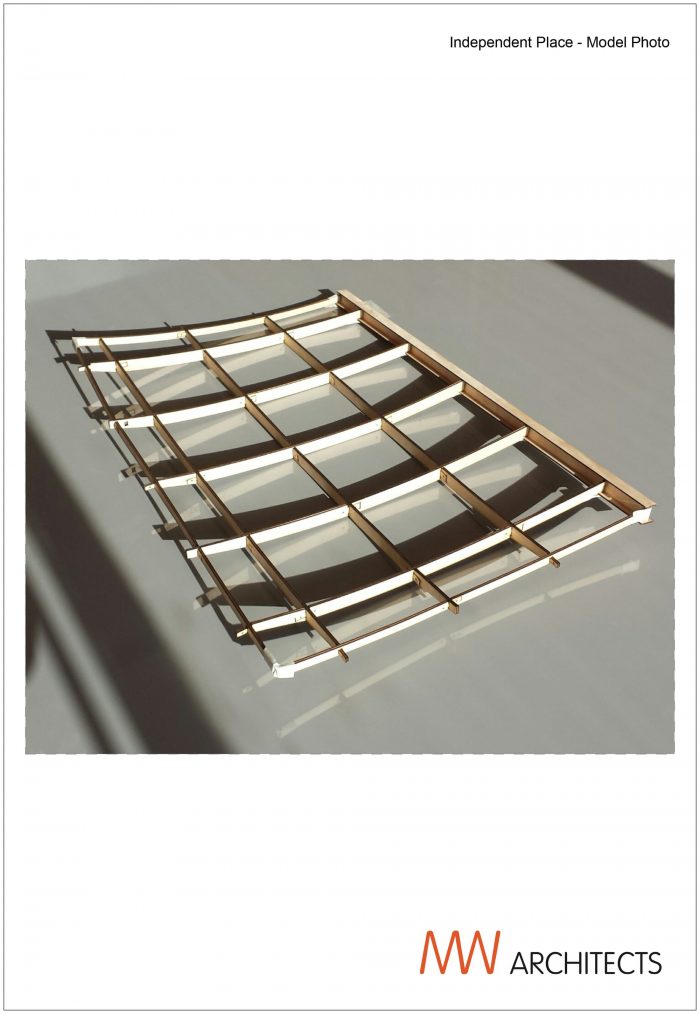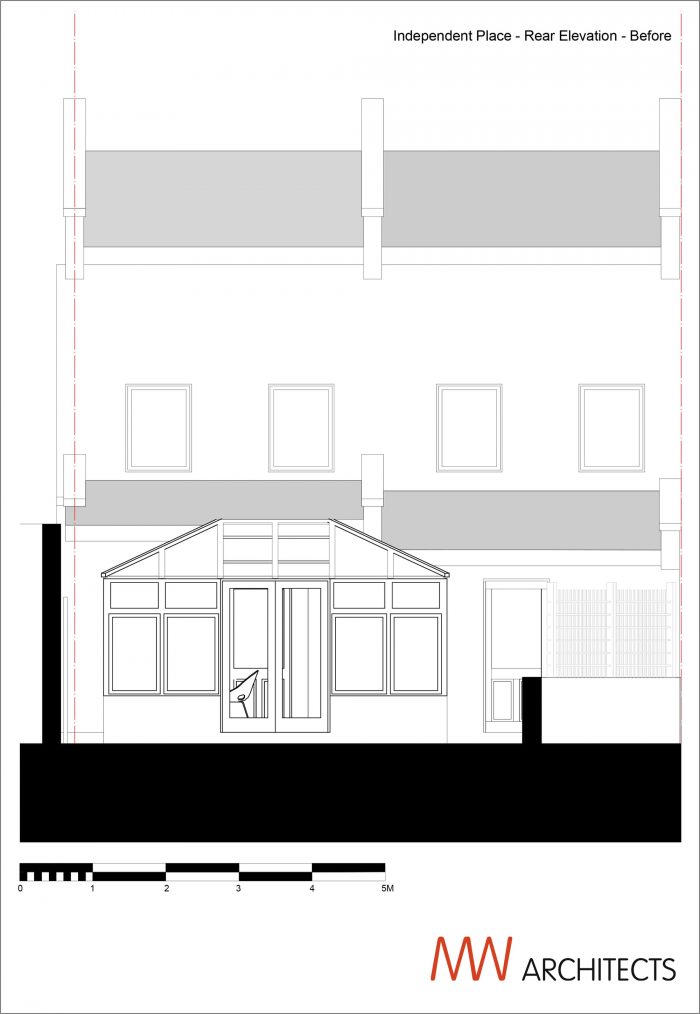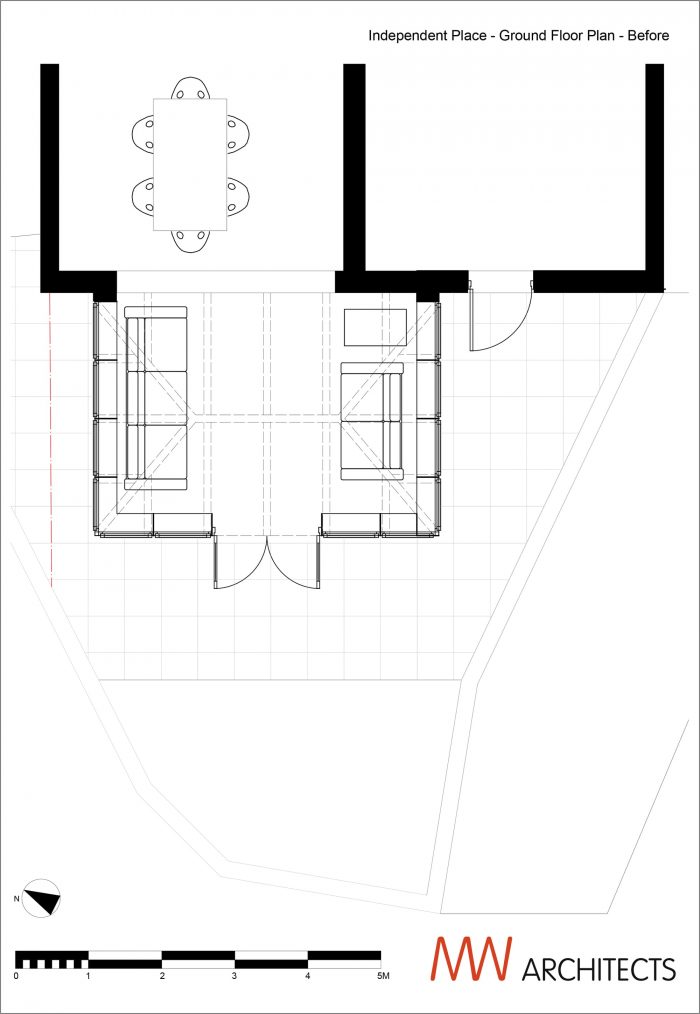客户希望有一个新的扩展,其大小与现有的温室相似,但气候更稳定,眩光更少,隐私更多,同时仍然保留光线和与他们适度的达尔斯顿花园的关系。 客户热衷于接受一个独特的设计方案。
The client wanted a new extension which was of a similar size to the existing conservatory, but with a bit more climatic stability, a little less glare and more privacy whilst still retaining light and the relationship to their modest Dalston garden. The clients were keen to embrace a unique design solution.
MW建筑事务所与Structure Mode紧密合作,设计了一个轻质屋顶,由双向弯曲的梁格子组成,并有一个受力的胶合板表皮。 屋顶沿着后缘和六个方形钢柱支撑。
MW Architects, in close collaboration with Structure Mode, designed a lightweight roof comprised of a lattice of beams which curve in both directions, with a stressed plywood skin. The roof is supported along the rear edge and on six square steel columns.
该设计利用了现有的温室基础,并保留了包括地暖和瓷砖在内的楼板–这是一个经济有效且实用的策略。
The design utilises the existing conservatory foundations and retains the floor slab including underfloor heating and tiles – a cost effective and practical strategy.
为了控制太阳辐射和眩光,屋顶向上倾斜,以利用冬季的阳光,最大限度地提高与花园的视觉联系。 屋顶悬垂遮挡了夏季的阳光,从而创造了一个有效的隔热空间,并有一个触觉刺激的屋顶。
To control solar gain and glare, the roof peels upwards to take advantage of low winter sun and maximise the visual connection to the garden. The roof overhang shades the glazing from the high summer sun thereby creating an effectively insulated space with a tactile exciting roof.
屋顶沿其西侧边缘向下倾斜,通过与旧温室的屋檐水平相匹配,尊重相邻邻居的意见。 一个圆形的夹层提升了屋顶,使其看起来像漂浮在空中。
The roof dips down along its western edge to respect the adjoining neighbours’ view by matching the eaves level of the old conservatory. A clerestory all round lifts the roof so it appears to float.
使用BIM开发了一系列的3D模型,然后用激光切割1:10比例的模型。 对物理模型和其中的连接进行了分析和组装,为设计和施工过程提供信息。 最终的模型图纸被用作全尺寸的数控模板。
A series of 3D models were developed using BIM, and then used to laser cut 1:10 scale models. The physical models and connections within were analysed and assembled to inform the design and construction process. The final model drawings were used as the full-size CNC template.
弯曲的屋顶横梁由LVL木板切割而成,然后在现场用螺栓连接起来。这种谨慎的材料选择使横梁足够小,以保持头部空间,同时每个结构网格连接是自我往复的 – 弯曲的边缘为悬臂屋檐提供稳定性。
Curved roof beams were cut from LVL timber panels and then bolted together on site. This careful material choice enabled the beams to be small enough to maintain head room, whilst each structural grid connection is self-reciprocating – the curving edges provide stability to the cantilevering eaves.
其结果是一个独特的平静空间。屋顶是可触及的,在最低点也是触手可及的。它鼓励游客去触摸它和观察它。曲线将人们的目光向外和向上吸引。这是一个令人振奋的空间,感觉与外部相连,但并不像以前的全玻璃温室那样过度暴露。光线和温度现在得到了很好的调节,使它成为一个实用和愉快的空间。
The result is a unique calm space. The roof is tactile and well within reach at its lowest points. It encourages visitors to touch it and look at it. The curve draws the eye outwards and upwards. It is an uplifting space that feels connected to the outside but isn’t overexposed as the previous fully glazed conservatory was. The light and temperature is now well regulated, making it a functional and enjoyable space to be in.
Architects: MW Architects
Area : 25 m²
Year : 2016
Photographs :French + Tye
Manufacturers : Metsa Woods, Alufold, WISA
Contractors : E&C Building and Design
Structural Engineers : Structure Mode
Architect In Charge : Matthew Wood, Stephanie Reid
City : Greater London
Country : United Kingdom

